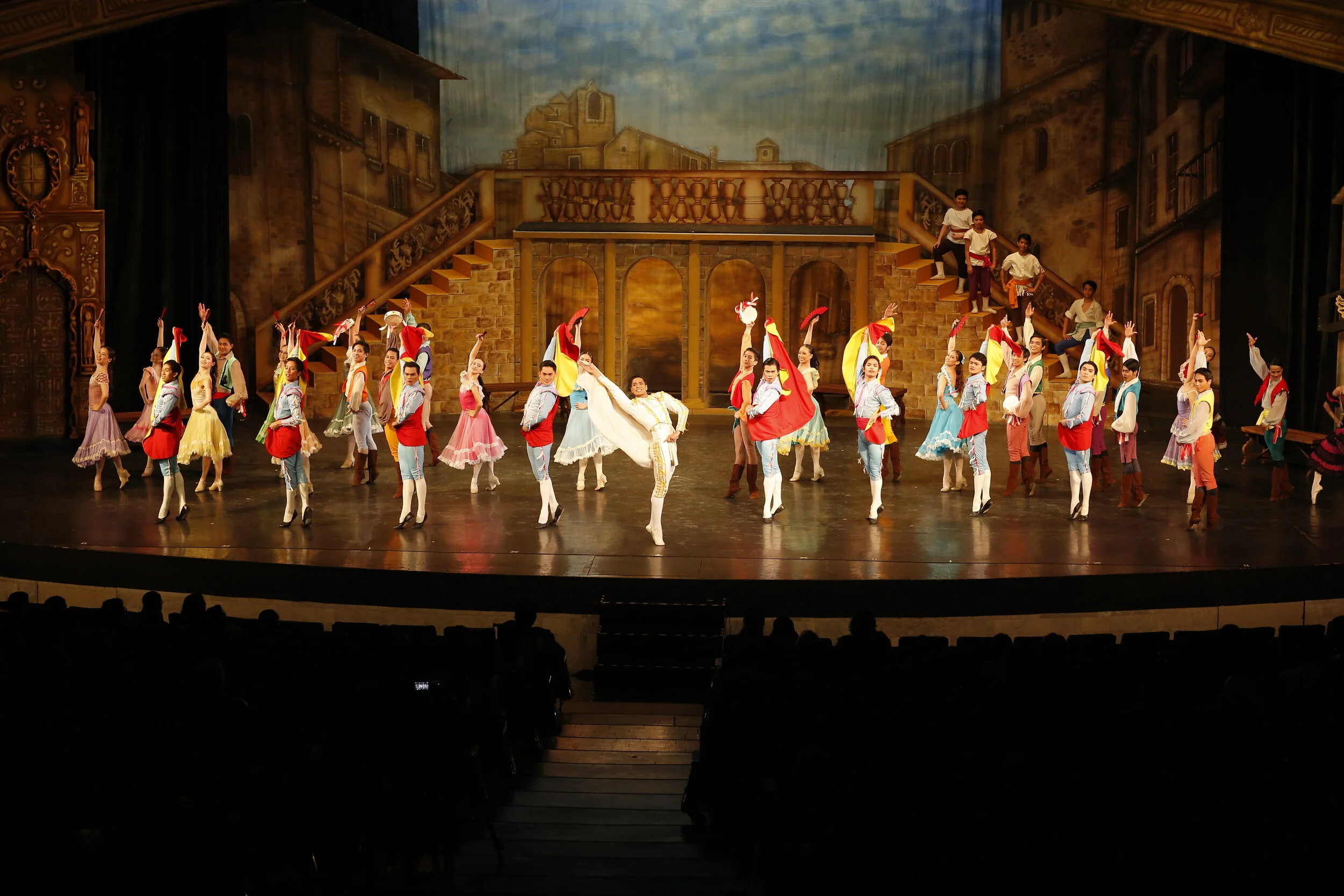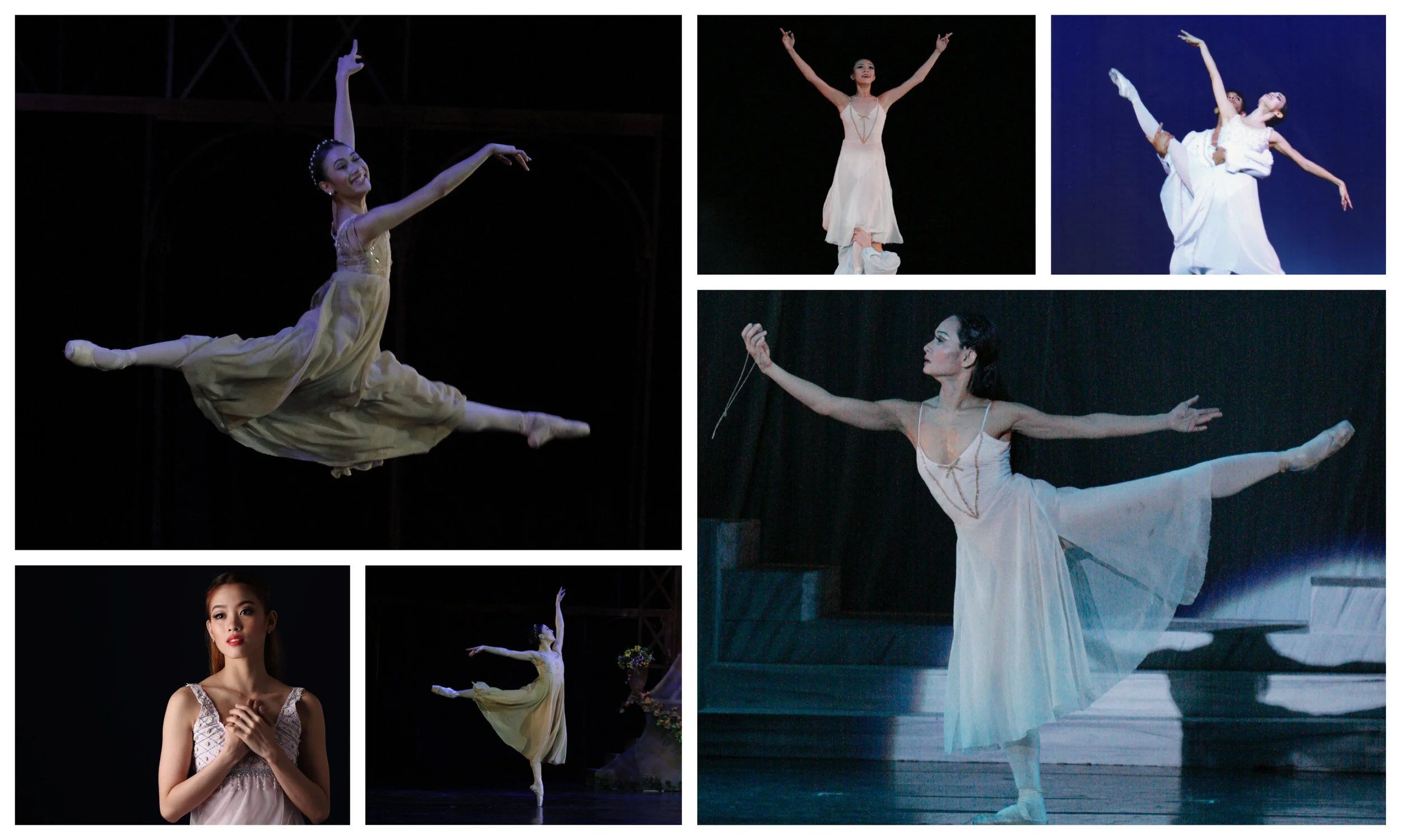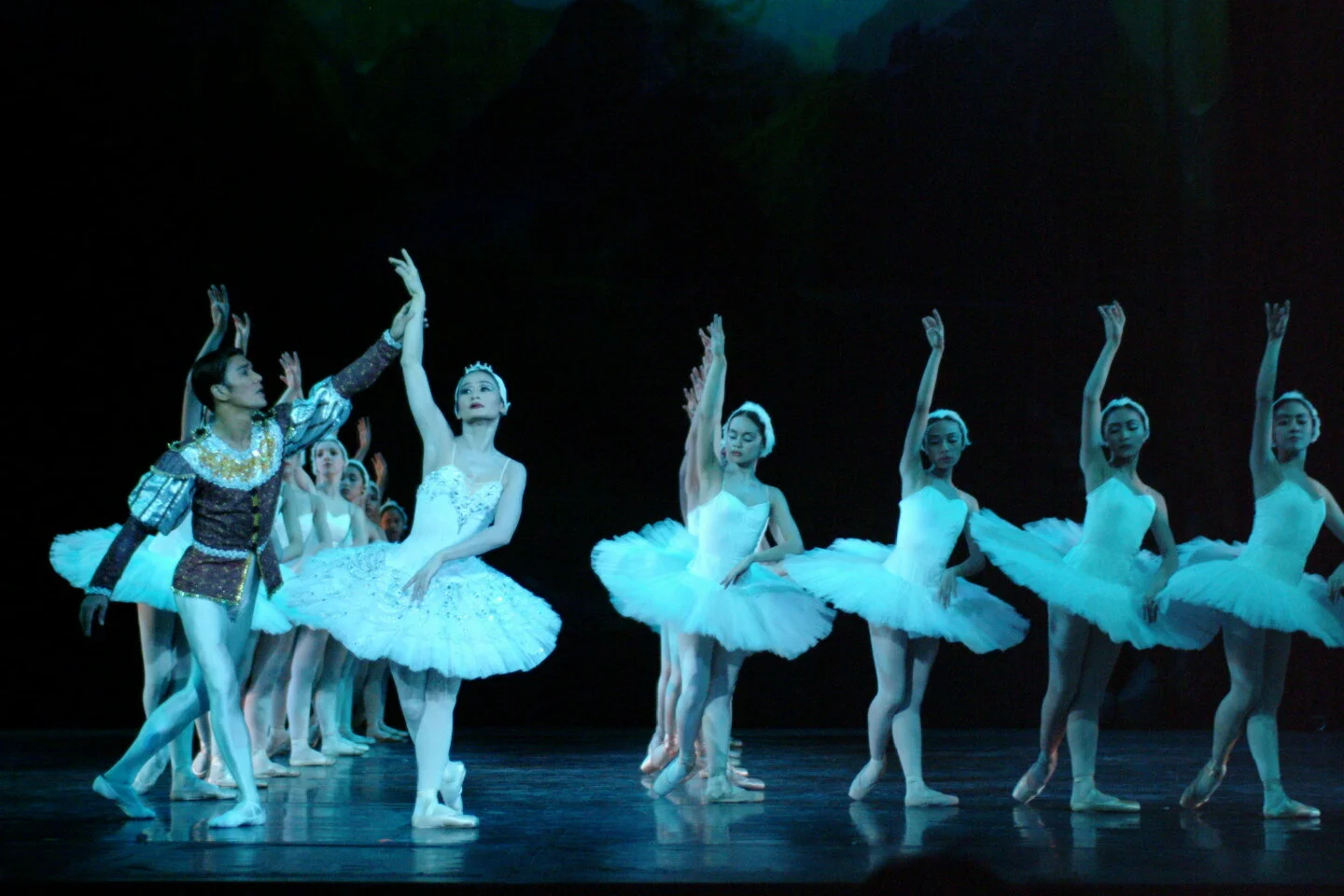Swan Lake: Unlocking the mystery of Odette and Odile
To stage its first full-length Swan Lake in 1996, Ballet Manila “imported” the Krasnoyarsk Ballet to make a full cast. Prima ballerina Lisa Macuja-Elizalde danced the dual role of Odette and Odile opposite Vassily Polushin as Siegfried. Photo from the Ballet Manila Archives
For most ballerinas, dancing one lead role in a full-length production is a major career milestone. But to dance two lead roles in one production is truly an achievement of a lifetime. This is why Swan Lake is considered as one of the most physically and emotionally demanding ballets ever choreographed. Not only is the lead ballerina required to dance two roles in one production but the roles in question are that of the protagonist and the antagonist. The lead ballerina is simultaneously the hero and the villain.
In 2003, Ballet Manila was big enough to mount Swan Lake with an all-Filipino cast, with Lisa Macuja-Elizalde taking on the dual role once more. Photo by Ocs Alvarez
As the story goes, Prince Siegfried falls in love with Odette, the queen of the swan maidens who was cursed by the sorcerer Von Rothbart to turn into a swan by day. She regains her human form at night. The spell can only be broken if someone who has never loved before would swear to love her forever. Should Rothbart die before the spell is broken, she will remain a swan for life.
To ensure that Odette stays cursed, Rothbart transforms his own daughter, Odile, to look like Odette and presents him to Prince Siegfried. Unable to tell the difference, the prince pledges his love to Odile and asks for her hand in marriage. Rothbart then reveals the truth and both the prince and Odette are heartbroken.
Finding the right ballerina for the role is always a challenge. This is true even back in 1877 when Swan Lake premiered in Moscow. The Bolshoi’s prima ballerina Anna Sobeschanskaya was the original choice for the role. However, her involvement with a ranking Russian official – who claimed that she had accepted jewelry from him but married a fellow dancer instead then sold the gift for cash – was too big a scandal to overlook.
Ballet Manila pioneer Elline Damian channels the movements of a swan, one good-natured, the other scheming, in the 2003 staging of Swan Lake. Photo by Ocs Alvarez
Pelageya Karpakova had the honor of performing the dual role during the premiere, opposite Victor Gillert as Siegfried. Unfortunately, the ballet was badly received. The audience found it difficult to appreciate Julius Reisinger's choreography and Pyotr Ilyich Tchaikovsky's music.
Almost two months after the premiere, Sobeschanskaya was given the chance to perform as Odette/Odile. The negative reviews, however, made her nervous so she decided to go behind the composer’s and the choreographer’s backs and asked Marius Petipa to choreograph a pas de deux to replace the pas de six in the third act. Petipa obliged and recruited Ludwig Minkus to write the music. This did not sit well with Tchaikovsky who argued that for better or for worse, the music was his responsibility including changes that the production would require.
Two dancers used to perform the roles of Odette and Odile until eventually, only one ballerina had to it as Mylene Aggabao did in 2003. Photo by Ocs Alvarez
In the end, he agreed to compose a new piece that would match Petipa’s choreography to the exact beat and would not even require an additional rehearsal with Sobeschanskaya. She was so pleased with the result that she asked Tchaikovsky to write another variation for her.
That pas de deux was received successfully and was performed by Sobeschanskaya again and again. However, it was removed from subsequent stagings and would not reappear until its rediscovery in the archives of the Bolshoi Theatre in 1953.
As many new versions of Swan Lake were unveiled, the lead characters were also updated to suit the times. From swan maidens, Odette and her friends were eventually written as cursed mortals. Odile, originally just Rothbart’s daughter in the 1877 version, was turned into the Black Swan sometime in the 1930s.
Just before joining The Joffrey Ballet in 2005, Christine Rocas danced as Odette and Odile in Ballet Manila’s production of Swan Lake that same year. Photo by Ocs Alvarez
The 32 fouettes that today’s audiences would often look forward to were originally “arabesque fouettes” performed by Pierina Legnani. It was Matilda Kschessinskaya who first performed the 32 fouettes that we know today. But when Olga Preobrazhenskaya inherited the role, she expressed disdain for this iconic segment of the choreography. She called it a “vulgar trick” and performed a series of turns in its place.
Odette/Odile was danced by some of the world’s most celebrated ballerinas including Yevdokiya Kalmїkova, Pierina Legnani, Adelaide Giuri, Anna Pavlova, Tamara Toumanova, and Matilda Kschessinskaya, to name a few.
“The White Swan is water – very fluid and transparent; and the Black Swan is fire – seductive, strong, alluring and dangerous,” describes Joan Emery Sia of the Odette/Odile role which she danced in 2017. Photo by Giselle P. Kasilag
At Ballet Manila, prima ballerina Lisa Macuja-Elizalde performed the dual role of Odette and Odile for the company since it was established in 1995 until she danced her last Swan Lake in 2011.
Along with Lisa, Elline Damian, Mylene Aggabao, Marian Faustino, Christine Rocas, Katherine Barkman, and current principal dancers Joan Emery Sia and Abigail Oliveiro have performed as Odette and Odile.
“To begin with, a swan is very difficult to portray,” explained Abigail in a 2017 interview when asked about the challenges of becoming a Swan Queen. “The swan moves differently from the generic kind of bird. They twist their heads a lot and they create different kinds of shapes.”
Katherine Barkman, now with The Washington Ballet, made her full-length Swan Lake debut in 2017 with Ballet Manila. Photo by Giselle P. Kasilag
“The White Swan is water – very fluid and transparent; and the Black Swan is fire – seductive, strong, alluring and dangerous,” Joan added in the same interview. “I’m actually still in the process of sorting out. But this is how I begin.”
Indeed, figuring out the white from the black, the light from the dark, and Odette from Odile is the key in dancing contrasting characters in one production. And once this mystery is unlocked, the result is a powerful performance that only Swan Lake can deliver.
From White Swan to Black Swan, the challenge for the ballerina is to portray two contrasting characters in one production, as Abigail Oliveiro experienced in 2017, her first time to dance the dual role. Photo by Giselle P. Kasilag.






